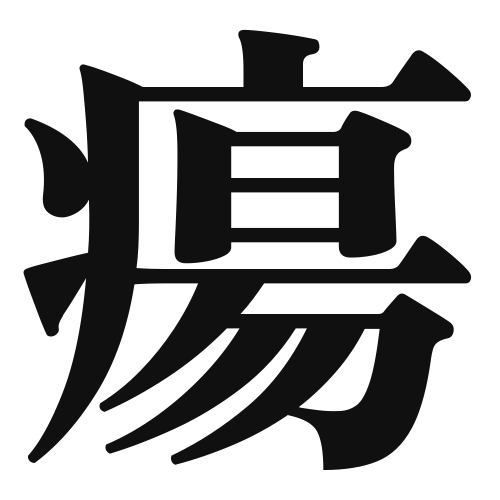1. Overview of Meaning
The kanji “瘍” (yō) refers to an ulcer or sore, typically indicating a painful, inflamed area on the skin or within the body. It is often associated with infections or diseases that cause tissue damage.
2. Formation and Radicals
Formation of the Kanji: The kanji “瘍” is a phonetic compound (形声文字) that combines elements to convey its meaning. The left part “疒” (meaning “disease” or “sickness”) indicates its medical context, while the right part “羊” (meaning “sheep”) contributes to the pronunciation.
Radical: The radical of “瘍” is “疒,” which is commonly associated with illnesses and medical conditions.
3. Examples of Usage
Common Words and Phrases:
- 瘍病 (yōbyō) – ulcer disease
- 瘍所 (yōsho) – ulcer site
Example Sentences in Daily Conversation:
- 彼は足に瘍ができてしまった。 (Kare wa ashi ni yō ga dekite shimatta.) – He has developed an ulcer on his foot.
- 瘍の治療には時間がかかる。 (Yō no chiryou ni wa jikan ga kakaru.) – Treatment for the ulcer takes time.
4. Synonyms and Antonyms
Similar Kanji:
- 傷 (shū) – wound; while both refer to damage to the body, “傷” is more general and can refer to any kind of injury, not necessarily an ulcer.
Antonyms:
- 健康 (kenkō) – health; this term represents the opposite of having an ulcer or any illness.
5. Cultural and Historical Background
Relation to Japanese Culture: In traditional Japanese medicine, understanding and treating ulcers has been significant, as they were often seen as indicators of deeper health issues.
Proverbs and Idioms: There are not many specific proverbs directly related to “瘍,” but discussions about health and wellness often reference the importance of treating ailments promptly to avoid complications.
